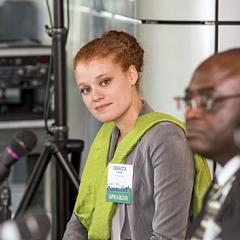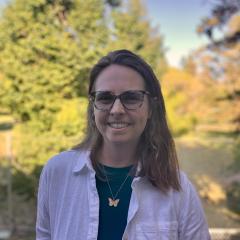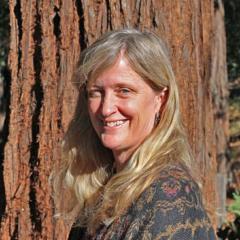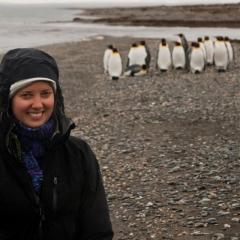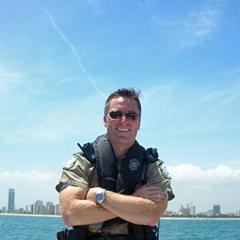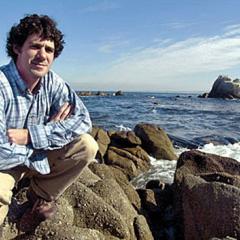Art in Science event features Fellows' work
On March 3, 2012, Tara Cornelisse and I partnered with the Expanding Your Horizons in Science and Mathematics organization to teach creative science communication to middle school girls. The workshops were built on art and ideas from Switzer Fellows Elizabeth Soderstrom, Susan Ornelas, Kelsey Jacobsen, Mary Brown, Glenn Yeck, Rafe Sagarin and co-led by Yiwei Wang, a GK-12 Fellow, conservation biologist and scientific illustrator; Jasmine Wang, an undergraduate at UC Berkeley studying science and literature; and Tamir Lance, a solar engineer. The goals of the project were to increase interest in environmental science, create environmental awareness, broaden equity and inclusion in the sciences, and promote environmental connections while decreasing science anxiety.
The Art in Science event immersed middle school girls in environmental science using art as a tool for science communication. We shared art from current scientists with the girls and presented a variety of art forms, including painting, installation art, wood block prints, fashion design, stencils, film, scientific illustration, architecture, photography, and science writing. By using these non-traditional mediums to discuss environmental issues we humanized the science behind them, thus circumventing the pattern of science disengagement. We not only shared art made by current scientists, but also allowed students to make their own art addressing a scientific topic that concerned them. Students worked with the scientist workshop leaders to create several different art forms, creating a forum in which students could interact on a personal level with scientists. They met role models in several STEM fields, allowing them to self-identify as a scientist, and produced a finished product that allowed them to feel pride and ownership of their scientific topic.
Background
Environmental science faces a major challenge in both communication and broad public interest. Current environmental research is not being conveyed in an understandable format, and community members, especially those traditionally underrepresented in STEM fields, are often intimidated by the exclusivity associated with science and have difficulty connecting with environmental canons.
The primary source of scientific research communication, peer reviewed journal articles, are inaccessible to most of the community not only because they are often posted in for-profit journals that cannot be viewed without a subscription, but also because the language used is so full of jargon that it is difficult to understand. Even when the information is presented in a more palatable form, such as newspaper articles or non-fiction books, the scientific subjects and ideas are often presented in a dense, complicated form or glossed over as too complicated to be understood by the layperson. Science needs to be communicated using novel mediums to reach a broader range of individuals while maintaining the integrity of primary literature.
Another consequence of scientific jargon use in environmental communication is a lack of connection between communities and their environments. The less relatable scientific principles are to individuals, the less interested those individuals are in engaging with environmental stewardship. This is compounded by the fact that students who would otherwise engage in environmental activities refrain from doing so because they lack environmental role models they can identify with. There are few opportunities for students to interact with professional or academic scientists outside of the often intimidating structure of school, so there is no scaffolding for them to envision themselves as scientists.
Students who are traditionally underrepresented in science are especially alienated from environmental subjects due to stereotype thread. Individuals from groups that are stereotyped as being bad at STEM fields, such as environmental science, may develop anxiety about the subject matter and shut down to future education and involvement. Many of these anxieties develop early and can remain with an individual for the rest of his or her life.
While these problems with science communication and connection are common, they are also avoidable. Our project used an innovative form of science communication, artistic engagement, and role model interaction that allowed us to reach middle school girls from a broad range of backgrounds, an audience that commonly disengages with science.
If you are interested in creating an event or program that uses art as a communication tool for science please don’t hesitate to contact me!
Art by Switzer Fellows
The following pieces by Switzer Fellows were used in the event:
Glenn Yeck
"I believe that when a species dies, a part of humankind dies. I would like for successive generations to gasp at whales, wild wolves, the great cats, birds of prey, and large land mammals of Africa and Asia. I don't want my grandchildren to know tigers, elephants, rhinos, and our mammalian neighbors from pictures and in zoos, behind bars, or separated by plexiglass.
I became a US Fish and Wildlife special agent because I am concerned with the health of our planet, because it troubled me that there are more tigers in captivity than in the wild, and because I want our progeny to marvel at the majesty of condors in flight, soaring above our land as symbols of a national commitment to conservation. I wanted to work with wildlife because I find it staggering that we have actually over-fished the oceans, that humankind's appetite has exceeded the sea's ability to satiate it. I am saddened to learn that there are less than one hundred Florida panthers left in Florida. Who is looking out for these magnificent creatures, and will they still be called "Florida" panthers if and when they too have become extinct?
One hundred thousand black rhinos were alive in 1960, but less than two thousand hang on today. Asia two-horned rhino population was halved by poaching in the 1990s. How are such atrocities possible, that the rhino's horn which protected the mighty beast for thirty million years has today become that which leaves it most vulnerable to predation by a "higher species"?
I'm still bothered by the fact that there are more tigers in zoos than in the wild, and that the illegal ivory trade continues to fuel internecine conflicts in Africa and foolish, fettish misbeliefs worldwide. I became a conservation officer because I am concerned about the health of our planet and am earnestly committed to protecting endangered species and their habitat, so that ecosystems and biodiversity prosper as they should.
I hope that this art show increases public awareness of the speed with which species are disappearing from this planet, and helps viewers overcome their "science anxiety." The animals crucially need our support."
Mary Brown
"In 2005 or 2006, several gas stations in my neighborhood went out of business and the vacant stations were soon surrounded by fairly hideous chain link fencing. These fences were begging for some sort of intervention. I originally thought of hanging framed photographs, creating a sort of outdoor public art gallery. I thought of hanging thousands of xmas ornaments. I wanted something that would move, slightly. Around this time I was in the habit of collecting Fall leaves, from an especially bright Fall-like tree called Liquid Amber. One day while staring at the fence, wondering what to do, it occurred to me that I could tie the leaves to the fence. It worked.
I call it the Relocation Project. Since 2005, I've tied thousands of leaves onto chain link fences of abandoned gas stations and vacant lots. The leaves don't fall off, ever. But they do change color as they die and as one end of a project dies off, I continually add new, fresh leaves to the other end, creating an ever-growing and ever-alive creation. The leaves move in the wind and can change color when backlight. They temporarily transform grim, barren lots.
A related part of the Relocation Project is collecting Fall-like leaves from one neighborhood and bringing them to a new neighborhood, a neighborhood devoid of Fall leaves. (That side project is highly inspired by Andy Goldsworthy.)"
Kelsey Jacobsen
"The octopus is one of my favorite creatures in the sea. We hear a lot about dolphins and orangutans being intelligent creatures, but octopuses are equally as intelligent – some say even more so. They may not appear as charismatic and curious as a smiling dolphin, but they can solve puzzles, change their color and texture to mimic the surrounding environment, and move through reefs with the help of their soft body that can fit through a hole the size of their beak."
Rafe Sagarin
"Nature is the source of all art. I like the medium of block prints because everything is variable, just like nature. Eventhough the carved block would seem to be a template that gives you exactly the same results every time (as opposed to a painting), I can get completely different results every time by varying the pressure of the print, the amount of ink and the mix of colors. This is not unlike how we all have remarkably similar DNA and yet all have our own variations that make us so interesting."
